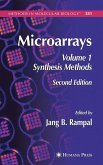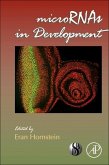The purpose of this book is to argue, and to convince those who may not agree, that the Hox genes are indeed so important that their study will not end with the 20th century. The book is divided into three major sections. The first section covers aspects of the regulation of Hox gene expression and the structure and function of the now justifiably well-known homeobox. The second section offers insights and discussions of the sometimes contentious issues of the origin and evolution of the aforementioned Hox complexes. In the third and last section the role of the resident loci in the specification of body plans and meristic identity of the
arthropods is presented.
In his 1894 book, Materials for the Study of Variation, William Bateson coined the term Homoeosis with the following prose: The case of the modification of the antenna of an insect into a foot, of the eye of a Crustacean into an antenna, of a petal into a stamen, and the like, are examples of the same kind. It is desirable and indeed necessary that such Variations, which consist in the assumption by one member of a Meristic series, of the form or characters proper to other members of the series, should be recognized as constituting a distinct group of phenomena. ...I therefore propose...the term HOMOEOSIS...; for the essential phenomenon is not that there has merely been a change, but that something has been changed into the likeness of something else. The book was intended as a listing of the kinds of naturally occurring variation that could act as a substrate for the evolutionary process and Bateson took his examples from collections, both private and in museums, of materials displaying morphological oddities. Interestingly the person who also coined the term "Genetics" proffered little in the way of speculation on the possible genetic underpinnings of these oddities. It wasn't until the early part of the next century that these changes in meristic series were shown to be heritable.
arthropods is presented.
In his 1894 book, Materials for the Study of Variation, William Bateson coined the term Homoeosis with the following prose: The case of the modification of the antenna of an insect into a foot, of the eye of a Crustacean into an antenna, of a petal into a stamen, and the like, are examples of the same kind. It is desirable and indeed necessary that such Variations, which consist in the assumption by one member of a Meristic series, of the form or characters proper to other members of the series, should be recognized as constituting a distinct group of phenomena. ...I therefore propose...the term HOMOEOSIS...; for the essential phenomenon is not that there has merely been a change, but that something has been changed into the likeness of something else. The book was intended as a listing of the kinds of naturally occurring variation that could act as a substrate for the evolutionary process and Bateson took his examples from collections, both private and in museums, of materials displaying morphological oddities. Interestingly the person who also coined the term "Genetics" proffered little in the way of speculation on the possible genetic underpinnings of these oddities. It wasn't until the early part of the next century that these changes in meristic series were shown to be heritable.








